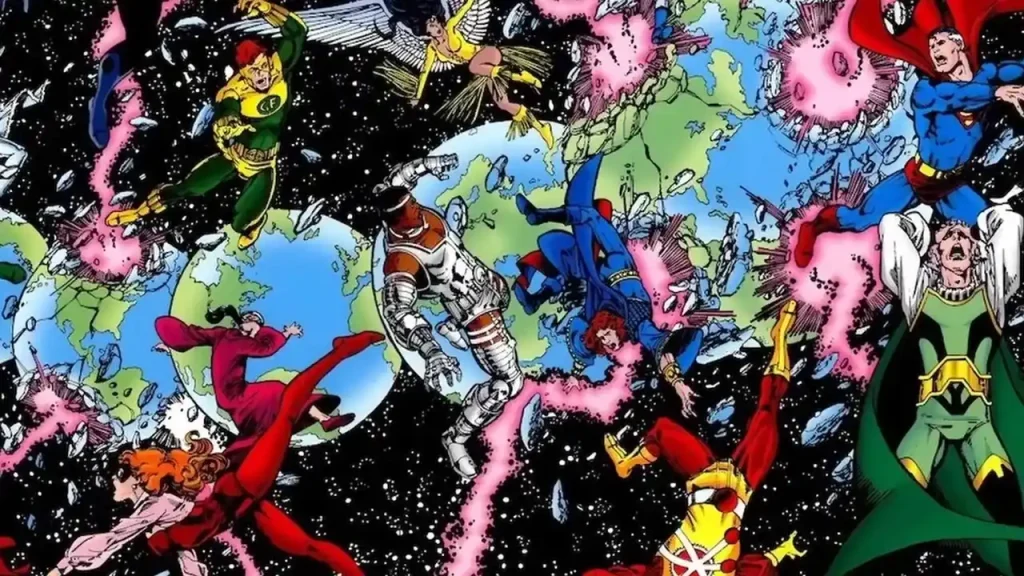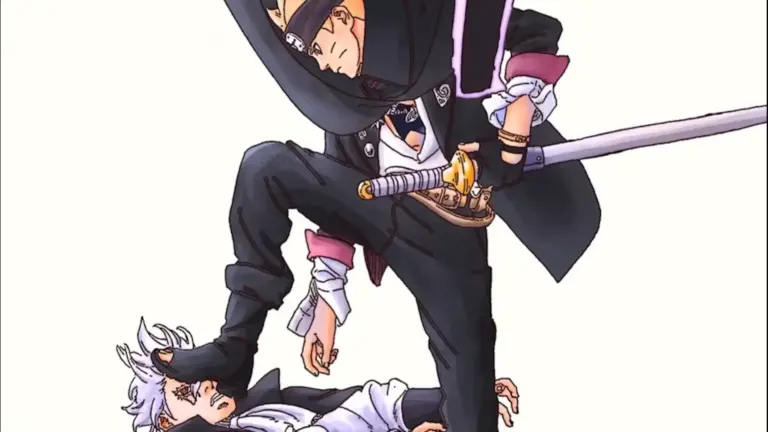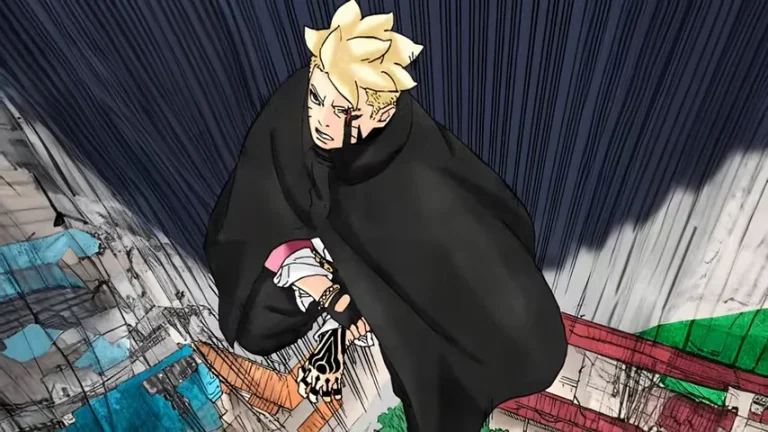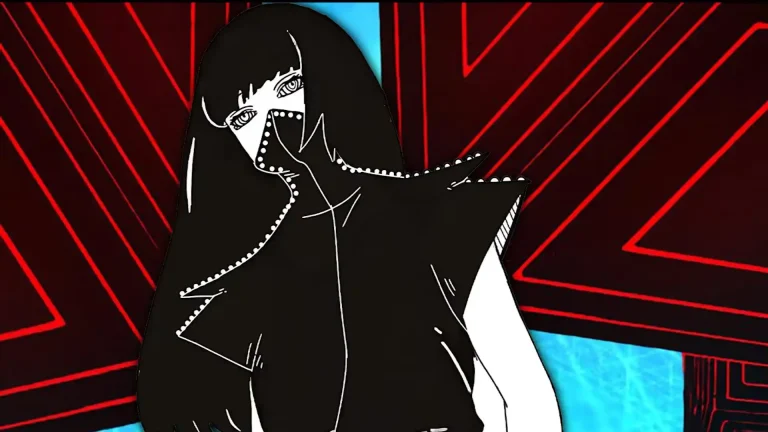Multiverse and Timelines in Boruto Two Blue Vortex

The multiverse, one of the most intriguing concepts in science fiction, introduces the possibility of multiple outcomes, infinite futures, and alternate realities. These elements drastically impact any story that dares to implement them, and “Boruto” is no exception. In Chapter 13 of “Boruto,” two blue vortexes introduced the concept of multiple timelines, which stems from Kashin Koji’s ability to see all possible futures. The name of this ability is prescience, which, by definition, is knowing something in advance, thus having foreknowledge. This implies that Koji can see all possible timelines that can materialize from the actions taken in the present time.
Some have used this to imply that “Boruto” has an actual multiverse, which isn’t necessarily true. Multiple statements from Koji himself outright confirm that this isn’t the case. In this article, I’ll explain Koji’s ability, how it works, and why Boruto Uzumaki has multiple timelines instead of an active multiverse.
In Chapter 13 of the Boruto manga, Kashin Koji confirms that he is affected by Ada’s omnipotence, which means that inside his head, Boruto is Ashiki’s vessel, the one who fled from Kara. He then clarified that even though his memories have been altered, he is aware that Boruto is indeed the son of the Hokage. He knew about this possible future long before it even happened.
Koji later reveals in Chapter 13 that along with Eida (Ada) and Daemon, each member of Kara was modified with the cells of Shibai Otsutsuki, and while Daemon and Code received Shinjutsu abilities in the form of reflection, omnipotence, and space-time claw marks, Boruto, Koji, and Delta weren’t so lucky. Instead, they all received an increase in their power but were still inferior to the other cyborgs.
This changed when Koji, on his deathbed, overwhelmed by Shiki’s extraordinary power, awakened the Shinjutsu known as prescience, which initially belonged to Shibai Otsutsuki himself. It allowed him to see infinite possible futures through film strips. They tell the story of Baryon Mode versus Isshiki, Boruto versus Kawaki, and even Code, creating the claw crimes by shrinking the body of the Ten-Tails. Now, these are things that happened in this timeline. Still, he also mentions other possibilities that didn’t materialize, such as a timeline in which Naruto dies in the battle versus Isshiki, which he then resurrects in Kawaki’s body, which leads to the destruction of the planet using his Divine Tree.
There’s also another possible future in which Isshiki is defeated. Still, Kawaki goes on to kill Boruto and Sarada atop the Hokage Monument, which leads to Code feeding Kawaki to the Ten-Tails, thus resulting in the world being destroyed once again. So, as opposed to one of the futures Sarada became the current timeline, you also have other timelines that didn’t manifest. That’s because the future isn’t one straight path; many narratives get snuffed out based on which branch of each multiverse crossroad is taken. It’s a battle royale between destinies.
This might lead people to believe that “Boruto” now has a multiverse since you have multiple versions of the timeline, but that isn’t the case. Multiple timelines typically refer to different versions of events or realities that branch out from a single point of divergence within the same universe. Each timeline represents a different outcome of a particular event. An example would be a scenario in which a character decides to go left instead of right; in one timeline, they went left, and in another, they went right. Both timelines do exist but are variations of the same universe.
Now, when it comes to a multiverse that suggests the existence of multiple separate universes, these universes can have completely different laws of physics, dimensions, and entirely different realities. Each universe within a multiverse can be independent of the others. One universe might have different physical constants where life never evolved, and another could mirror our universe. At the same time, another one might be an entirely different universe with unique elements and rules. So, functionally, a multiverse and a timeline are two different things. So, while multiple timelines can be considered a part of a larger multiverse, multiple timelines don’t necessarily imply a multiverse. They could be different branches of a single universe.
Conversely, a multiverse doesn’t have to involve timelines; it could involve entirely different, unrelated universes. You can also have other timelines; the most popular one would be an alternate one. This happens when a character travels back in time and changes to the past, thus creating different branching realities, each with its own set of events and outcomes. This theory suggests that every decision or action creates a new timeline, resulting in a multiverse of parallel universes. This is the logic used in the Marvel Cinematic Universe, which is why changes they made to the past wouldn’t affect their future but instead create a new timeline where those changes occurred.
That is why there’s so much confusion about whether Boruto has a multiverse; everyone uses the MCU’s logic. So, if Koji sees infinite possibilities, there must be infinite alternate timelines, establishing a multiverse of parallel universes. Of course, this isn’t the case, and it goes back to what was established in Boruto’s time skip arc. You see, after traveling to the past with Sasuke, Boruto bumps into someone holding a piece of paper, and after the collision, Boruto speaks about the thundering train while walking away, which the unknown fellow overheard. This is then revealed to be the father of Denki, who will later become the company’s president, producing the Thunder trains. This creation is something he attributes to something he heard from a kid over 15 years ago, which would be Boruto, who traveled to the past. This means that the rules of time travel and timelines work very differently in Boruto than in the MCU. Instead of creating alternate timelines, changes to the past change the future of the current timeline. So, think about the movie “Back to the Future” or the Flash storyline, where the Flash erases the original timeline by saving his mother’s life or the countless other times he was used to reboot the DC continuity.
So timelines and time travel work differently based on who is writing the story, but Boruto’s use of these concepts is more aligned with DC’s interpretation than the MCU. That is why when Koji mentions that Jura will kill Boruto, he further goes on to clarify that it isn’t an absolute thing, but many futures show it happening. This must not pass; we can’t let this worst-case become a reality. As I mentioned, there are infinite possibilities, and through you learning about this now in the present, our future has already started to change, one take at a time. So, this confirms that you can change the future outcomes of Boruto’s timelines. Still, it confirms that the future Koji saw isn’t an existing reality but a possible future reality. That is why he says they can’t let the worst case become a reality, which means they aren’t separate universes but possible outcomes.
Now, I mentioned this because I’ve seen some arguments saying that since he can see these timelines, that must mean that there are existing realities that one could even travel to using flying Thunder God. This would be possible if Boruto had an actual multiverse where every possible alternate timeline is accurate, and they all happen in an ever more significant, ever-branching way where every potential story happens. However, if this were the case, Boruto would be stuck living out just one of the infinite timelines available to him; he wouldn’t be able to decide which direction his universe goes in in the multiverse. That’s not how the multiverse works. This would be similar to the Infinite Earths concept in DC, where there is an actual multiverse that has different versions of these characters existing at the same time. This differs from the multiple timelines within each universe, so it doesn’t affect the other universes when the Flash changes the timeline in his universe.
To take this back to Boruto, Kashin Koji explains that there’s no timeline paradox since he’s only relaying what he saw. It’s a standard procedure of prescience. A timeline paradox is the contradiction of cause and effect within a timeline that results from traveling back in time. In this case, there isn’t a timeline paradox because these futures are just possible realities that haven’t manifested yet, thus supporting my original point.
We’ve already seen three separate timelines featuring possibilities at play in Boruto. First, we have the original timeline, where Momoshiki saw Boruto losing everything, and he gained control of his body. Then we have the second timeline, where Boruto didn’t lose everything, mainly due to Sarada sending Sasuke to protect him, which is the current timeline. Then, we also have a third possible timeline, which Boruto saw in Chapter 75, which depicted Kawaki standing over someone with blood splattered on his face. In this timeline, Kawaki succeeded in killing Boruto. So, they put everything in line, so it makes sense. Momoshiki initially saw a timeline where he won in Chapter 80 of the original Boruto manga. Still, we know that it wouldn’t last based on the events of the time skip timeline we saw in Chapter 1. So, even in the original timeline, Boruto eventually regained control of his body. I believe this scene is a part of the original timeline for one reason: Boruto doesn’t have the black marking on his chest. I know this isn’t the case, even though we didn’t see his chest in the preview because he doesn’t have the extended piece on his neck. As you can see, Boruto post-resurrection has three black markings on his neck when the karma seal is active, and one of them remains active when the karma seal isn’t active, yet in this scene, Boruto only has two markings on his neck, not three. Now, you could say that it’s a design change, and we shouldn’t look deep into it, but when you have supplementary evidence of this change being deliberate, you shouldn’t ignore it.
So, what all of this could mean is that in the original timeline, Boruto didn’t suffer through the events of Chapter 67, where it had to be revived by Momoshiki, which could mean that in the original timeline, Boruto was able to suppress Momoshiki after the fight with Code, he then went on to lose everything in Chapter 80 but regained it later on. Thus, he does not have the karma mark on his neck. So, what this also means is that the timeline where Boruto gets stabbed by Kawaki is already a snuffed-out narrative. The future has already been changed, so this second timeline, which Boruto saw in Chapter 75 where he peered into Kawaki’s future, all of those events were supposed to happen to Kawaki, not Boruto, mainly because all of this took place after Kawaki succeeded in killing Boruto atop the Hokage Monument, as Koji predicted. That is why the scenes with the Joning is something Kawaki experienced; it’s his future, not Boruto’s.
As I said before, there was a third possible future timeline since the future was altered once again. That is why this scene with Kawaki didn’t take place; it isn’t a plot hole or just a design change. The future itself changed. I believe this second change happened when Kawaki was about to strike Boruto in Chapter 79 of “Boruto: Naruto Next Generations.” Boruto was dead to rights and wide open; he was about to die. That is when Kawaki would have activated his horn state to show his entire descent or to finish him off. Either way, this all changed when Sarada intervened. She wasn’t supposed to be there, at least not in this timeline. This is crazy because Toner mentioned that Boruto’s true enemy will be fought to the bitter end, which Jura also mentions in Chapter 4 of “Boruto: Two Blue Vortex.” So, it could be the case that the one who helps Boruto to avert his dark future is Sarada, who conveniently shows up when he hits the fan, and the scene atop the Hokage Monument is when she asks Sasuke to save him. It might be true that these theories about Sarada have the power to change fate itself.
Or it could be that what saves Boruto from his dark future is the Jougan, which Toner refers to as the Star of Hope. By the way, this all goes back to Chapter 1, where Boruto said, “I guess this is the only possible outcome.” This implies that Boruto Uzumaki tried to prevent this from happening, but it happened anyway, which means that Boruto later becomes aware of this fate as well. It also ties into Boruto knowing about the true horrors of the Ten-Tails and the dark future he’s trying to prevent. It all goes back to his enemy being fate itself.
But that’s it. Let me know your thoughts on it. Does this make sense? Do you believe Boruto has multiple timelines and is not a multiverse? Or do you still think it’s a multiverse for some reason? But I can assure you that Boruto does not have a multiverse; it has future possibilities that can be referred to as timelines, as there are different timelines. So you have parallel universes, as I mentioned in this article, you have divergent timelines, and you also have branching points. So, Boruto’s use of timelines isn’t similar to the MCU and isn’t identical to what happened in the recent Flash movie. It keeps it simple and uses the original concept of time-traveling timelines established over a century ago. Some people might overcomplicate it to make it sound complex, but it isn’t. With that, it was said.
As we explore the intriguing nature of Boruto’s multiple timelines in this analysis, the latest events in Chapter 14 of Boruto: Two Blue Vortex reveal how Jura’s confrontation with Boruto sets the stage for even more potential futures. To fully understand the unfolding story, be sure to revisit Boruto Two Blue Vortex Chapter 14 and stay updated on the latest manga discussions on our homepage.






